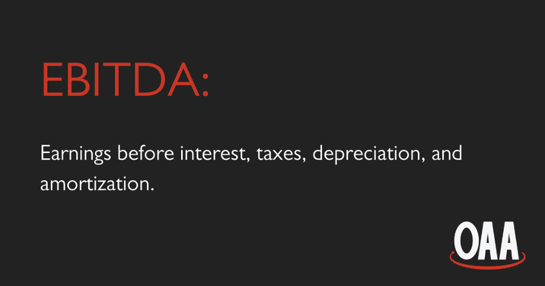Use Insurance agency KPIs to increase your profits
5 min read
Topic: Video Insurance Agency Growth Strategies Grow an Agency
Let’s talk about the importance of key performance indicators for improving the profitability and the success of your insurance agency. A lot of insurance agents and agency owners run their business based on hunches and “out of their back pocket”, but it's really difficult to grow an agency consistently and make it profitable over time doing it that way. Especially right now, with COVID-19 likely to be impacting the insurance industry through at least 2022… and perhaps as long as 2024.
Insurance carriers are watching
Being really efficient and managing your business really, really well, is going to be critical, not just to growth, but also to profitability. Recently, I was speaking to a senior vice president for the Hartford insurance company, who said that the way insurance carriers measure and evaluate insurance agencies is actually changing.
Carriers are looking much more closely at how well agents use technology, and how profitably the business is run, and use this information to decide whether or not they're going to continue to do business with that agency, or whether they'll appoint them.
So minding your key performance indicators (KPIs) is important now, but it will be even more important as we go through the next few years that you do everything you can do to manage your business and make it grow.
How well does your agency gather data?
The first place to begin is to gather some information. Almost all the information you're going to need will come from your agency management system. Just a side note on that: many agencies are really good at gathering data, others are not so good. So one of the things you may want to do as a starting point is to audit how well you and your agency are doing in terms of gathering the data that you're going to need.
The more data you have, the easier it will be for you to analyze and make great decisions about how you're going to make changes in your agency to grow your bottom line.
Top-line or bottom-line growth?
Just a real quick point: as an agency owner myself, I know that it's easy to get focused on top-line growth. Many years ago, a friend said to me on a hunting trip: “I don't care about the top line, I only care about the bottom line. And that's all I focus on”.
My friend was right. With insurance key performance indicators, we're going to be focusing on driving growth at the bottom line.
Gathering data for insurance KPIs
First of all, you need good financial data on your sales, and you need data on sales by producer, by customer service agent, by type (personal lines vs commercial lines). You need data on profitability, on retention rates, you need payroll data, both by employee and by producer.
You're going to want to gather a bunch of data. And as we talk about specific key performance indicators, I'll indicate whether or not you need an additional piece of information to make this analysis. But relax, you've already got the information you need. It's just a quick question of assembling it and then making some calculations using it.
EBITDA
One of the KPIs that I think is critical is to look at EBITDA: earnings before interest, taxes, depreciation, and amortization. Basically, it's your bottom line profit, to which you add back some things like interest, taxes paid, depreciation taken, and amortization. The reason that you want to focus on EBITDA is that it will allow you to compare your agency against any other agency irrespective of how you finance your business, whether you bought books of business in the past, or whether you've got a lot of depreciation due to equipment that may be hitting your income statement right now.

So we don't want to talk about profit yet, we want to talk about EBITDA, which is a KPI in itself, as well as your EBITDA as a percentage of sales.
Spread
Another KPI that we want to look at is spread, which is the ratio between your expenses for employee costs and your commission income. Spread is really the same thing that a manufacturer does when they look at cost of goods sold, but the difference is that you need to know your revenue per person and compensation per person to calculate spread.
Benchmarking your insurance agency
Just bear in mind you want to look at KPIs as something that you can use to not only understand your own business and make adjustments, but also to compare your results against similar agencies. This will give you context, and perhaps give you some encouragement or inspiration to improve your agency operations
Insurance Retention
Some other things that you're also going to want to know, in addition to information out of your management system, is your loss ratios with your key carriers, and what your retention data is.
I suggest that you calculate retention in different ways:
- One is retention of policies.
- Another is retention of customers.
- The third is retention of income.
As you see, you have three different ways to look at retention. Some will give you information about your customer satisfaction, while others will speak to your profit margin.
Evaluating insurance production
You also want to know your new business production rates, both at the policy level as well as at the income level. When you get this information, don’t only get a global number for the whole agency - it's a good idea to look at it by producer, and even by customer service agent. That granular data will not only help you understand how well the agency is doing, but how well individuals inside the agency are doing. That gives you great opportunities for coaching, development, training… and sometimes for career discussions.
Financial insurance KPIs
Now, I've been primarily talking about KPIs that impact the expense and income side of the financial statement. But as you know, it takes a balance sheet and income statement to show a complete picture of any agency from a financial perspective, so we also want to look at KPIs with respect to the balance sheet.
Two of the most important ones are the trust ratio and the quick ratio.
Trust ratio
I know you're familiar with the trust ratio; are you in trust? Or are you using your clients’ money to operate your business? That's usually a big legal rule to violate.
Quick ratio
The quick ratio simply is a measure of your current assets and your current liabilities. It measures your ability to pay your bills at any given point in time.
Knowing your quick ratio and then comparing it against other agencies of similar size and growth rates is a great way to give you insight into how much you can grow and how fast you can grow, given the velocity of cash inside your agency.
There is so much more to this topic! I'd love to invite you to download my free e-book, The Future of Insurance is Data-Driven & People-Led. It's a short book, I promise, and it elucidates and describes many of the concepts that I’ve written about here. It tells you how to make these calculations, and then - really importantly - what to do about them once you have the information. It's available on my website, and it's free - I hope you'll download it.
Tony Caldwell
Tony Caldwell is a modern “renaissance man,” who is not only immensely successful in the field of insurance, but is also a writer, children’s advocate, mentor and even a licensed pilot.
Always keen on helping others make their dreams come true, Tony and his team have helped independent agents grow into more than 250 independent agencies. This has made OAA the number one ranked Strategic Master Agency of SIAA for the last 5 years, and one of Oklahoma's 25 Best Companies to Work for.
Tony loves to share his knowledge, insight and wisdom through his bestselling books as well as in free mediums including podcasts and blogs.
Tony and his family are members of Crossings Community Church, and he is very active in community initiatives: he’s chairman of It’s My Community Initiative, Inc., a nonprofit working with disadvantaged people in Oklahoma City; and chairman of the Oklahoma Board of Juvenile Affairs., and he has served through many other organizations including the Salvation Army, Last Frontier Council of the Boy Scouts of America, and the Rotary Club.
In his spare time, Tony enjoys time with his family. He’s also an active outdoorsman and instrument-rated commercial pilot.
Recent Posts
Video
Hiring Insurance Agents and agency Employees
Contents The First Questions Hire in order to free yourself from non-sales functions Customer...
Video
Tips to Increase Your Independent Insurance ...
Most agents, in my experience, focus on growing their agency's top line - we're always thinking...

